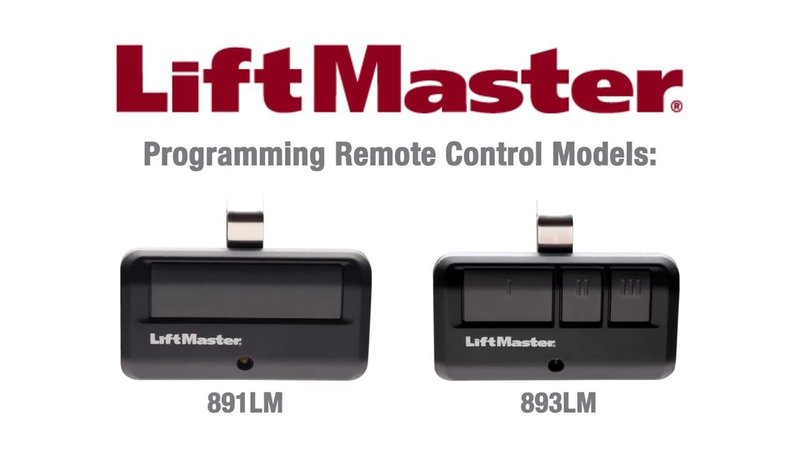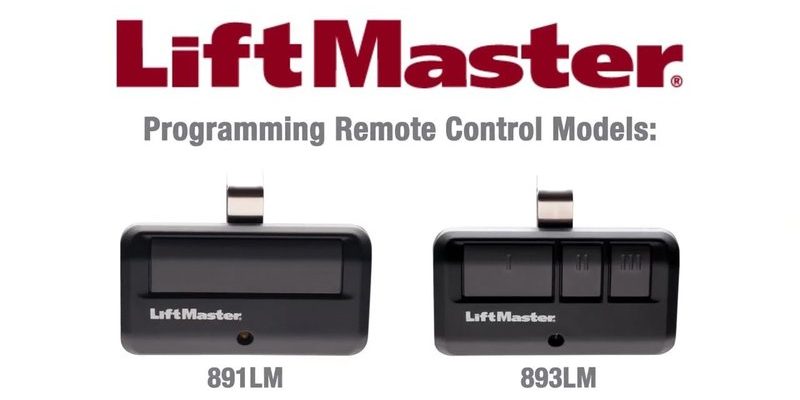
The Linear brand makes some popular garage door remotes—simple, reliable, and widespread in homes across the country. These remotes look basic, but they have a secret handshake with your lift system. They use unique rolling codes to keep your garage secure and sync up with the opener. If you’re holding a Model MCT-3 or similar, the steps are pretty similar (and honestly, not too scary). The trick is knowing where to press, which button to hold, and when to let go. So, let’s walk through the pairing process and make sure your garage door starts listening again.
Understanding Your Linear Garage Remote and Lift System
Before jumping into the pairing steps, it’s worth getting to know what you’re dealing with. Garage door remotes aren’t all built the same; some use dip switches (tiny toggles inside the remote), while others—like most modern Linear remotes—use a *”learning”* code system. Basically, your remote sends a unique rolling code each time you press the button. This keeps things secure and stops anyone from intercepting the signal. The good news? This type of remote is easier (and safer) to pair.
The lift system, or garage door opener, is the “brains” in the ceiling. Most units will have a Learn, Program, or Set button somewhere on the motor housing. Linear has made this process pretty straightforward, but tiny differences between models can trip you up. If you peek at your opener and see buttons labeled “Learn” or “Smart”—that’s what you’re hunting for. It’s also a good idea to check if your remote is compatible with your opener; not all remotes play nicely with every system, especially if you’re working with an older garage opener or considering a universal remote.
One more bit: having a fresh battery in your Linear remote before you start is crucial. If your remote’s light seems dim or inconsistent, that’s your first red flag. Grab a new 3V coin cell battery (often CR2032 or CR2016) to avoid banging your head against the wall when nothing seems to work. Trust me, that’s a classic “why isn’t this pairing?” moment.
Step-by-Step: How To Pair Linear Garage Remote With Lift System
Pairing your Linear remote isn’t complicated, but the sequence matters. Here’s the thing—rushing won’t help. Take your time and follow these steps closely:
- Locate the Learn Button: Find the Learn or Program button on your garage lift system. Usually, it’s on the back or side of the opener, often behind a light cover. It might be labeled, or you might just see a tiny square button (sometimes with an LED light next to it).
- Press the Learn Button: Press and release the Learn button. An indicator light should turn on (solid or blinking) to show the opener is in pairing mode. You’ll have about 30 seconds to complete the next steps.
- Press Remote Button: Grab your Linear remote and press the button you want to program. Hold it down for a few seconds, then release. You’ll usually see the opener’s light flash—or hear a “click”—as confirmation. Some remotes need you to press the button twice.
- Test the Connection: Wait a few seconds, then press the remote button again. If the door opens or closes, you’re done! If not, double-check battery strength, remote compatibility, and try again.
Pairing isn’t about brute force. If you get stuck, take a breath, start over, and make sure your timing isn’t too fast or too slow. Linear garage door openers can be a little picky!
The process might sound intimidating, but it’s almost like programming a universal TV remote—set it in pairing mode, press the “signal” button, and wait for the magic to happen. If you’re not getting a reaction, the most common mistake is missing the narrow pairing window after pressing Learn. It’s like running for an elevator and just missing the doors—timing is everything.
Common Problems When Pairing Linear Remotes and How To Fix Them
You might be wondering why things sometimes don’t work, even when you follow all the steps. Honestly, it happens to everyone. Let’s break down the most common issues when trying to pair a Linear garage remote with a lift system, so you can troubleshoot like a pro.
First up, expired batteries. It’s easy to overlook, but a weak coin cell can cause random failures or inconsistent signals. If your remote light is faint or doesn’t blink at all, swap in a fresh battery before anything else. It’s a cheap, quick fix and can save you a full afternoon of frustration.
Next, remote compatibility. Not every Linear remote works with every opener, especially if you’re mixing and matching older and newer models. Double-check your opener’s manual or look for a compatibility list on the back panel. If you’re using a universal remote, make sure it has Linear code support. Universal remotes can mimic most brands but still need the right signals to sync.
Finally, interference and range. If you’re standing far from the opener, or have metal barriers/LED light bulbs close by, your signal can get blocked. Try pairing while standing directly under the opener, with all lights off. If you’re still stuck, unplug nearby electrical devices and give it another shot—it’s surprising how often this helps.
Resetting Your Linear Garage Door Opener for Fresh Pairing
Sometimes you just have to start over. If you bought a house and want to clear the old remotes, or if pairing keeps failing, resetting your Linear opener is the best move. This wipes the opener’s memory so you can give it a clean slate.
To reset the system, find the Learn button again. Press and hold it—don’t just tap. After about 6–10 seconds, you’ll see the LED light flash or turn off. That means the opener has deleted all paired remotes from its memory. Now, none of the old remotes will work until re-paired.
After resetting, follow the regular pairing process as if it’s a brand new system. Add each remote one by one. If there are multiple people in your household wanting remotes, now’s the perfect chance to sync them all at once. Resetting is also a good security move if you lost a remote or suspect someone else might have access.
Just a gentle warning: once reset, you can’t undo the wipe. Make sure you have all remotes handy before you clear the codes. It’s a bit like changing the locks on your door—worth it for peace of mind.
What To Do If Your Linear Remote Won’t Sync
Here’s the thing: sometimes, even after following every step, your Linear garage remote just won’t pair up. Before you assume the worst, let’s walk through a few troubleshooting tricks.
First, make sure the remote is not already paired with the opener. Sometimes, trying to re-sync an already-programmed button can cause confusion. Press the button to see if the door responds before entering pairing mode again.
If you’ve swapped batteries and checked compatibility, it’s time to look for physical obstructions. Is the Learn button dirty or jammed? Sometimes, dust or spiderwebs can interfere with the contacts. Give it a quick clean. Also, watch for any loose wiring on the opener itself—older units can get finicky if a wire comes loose.
For universal remotes: double-check the instructions. Some require a special input code for Linear systems, or a different sequence of button presses. If your remote flashes a different color or doesn’t seem to respond, it might not be set to Linear mode. Pull out the manual—or search for the exact model number online.
If all else fails, try unplugging the opener for a minute and plugging it back in. It might sound like the IT fix (“just restart it!”), but sometimes a power cycle helps clear out glitches. Garage electronics, like computers, get cranky after power surges or long use.
Comparing Linear Remotes: Brand vs Universal Options
You might be tempted to grab a universal remote instead of sticking with a Linear-branded one. Let’s weigh the options, because there are good reasons for both choices.
Linear remotes are made specifically for the system in your garage. They’re plug-and-play, use the exact rolling code protocol, and rarely have compatibility headaches. If you like things simple, this is the way to go. Plus, you’ll find replacement remotes at most hardware stores.
Universal remotes offer flexibility. They’re a lifesaver if you have multiple garage door brands or want a single device to control everything. The downside? Programming can be trickier, and they sometimes lack support for newer security codes. You’ll usually need to enter a specific code or mode for Linear systems, so read the instructions closely. Some brands (like Chamberlain or Genie) make solid universal remotes, but check for “compatible with Linear” on the packaging.
Here’s a quick comparison:
| Linear Remote | Universal Remote |
| Works out of the box Easier pairing Less troubleshooting |
Controls multiple brands Extra setup steps Can be cheaper |
If you’re someone who wants zero surprises (or plans to move soon), sticking with the Linear remote makes life easier. If you’re a DIY fan or have a multi-car household with different opener brands, universal may be worth the extra effort.
Keeping Your Linear Lift System Secure and Reliable
Pairing your remote is one thing, but keeping your garage system running smoothly (and safely) is a bigger picture. Here’s what I’ve learned from helping neighbors and family over the years—you can avoid a lot of headaches with some easy habits.
First, make a regular habit of checking your remotes. Batteries die quietly, and it’s better to catch them before you’re stuck outside in the rain. Swap in a new coin cell every year or two—think of it like changing smoke detector batteries. A little effort goes a long way.
Next, pay attention to how your garage door opener sounds and moves. Grinding noises, jerky motions, or slow responses aren’t normal. Sometimes, the issue is just a remote out of sync, but worn gears and low batteries in the wall button can also cause trouble. Don’t ignore warning signs. A quick tune-up once a year can keep your system happy for a long time.
If you reset your Linear opener or add new remotes, always record which remotes are paired. It’s easy to lose track, especially in busy households. Write it down or take photos, so you’re not stumped later on. And—this one’s key—never leave remotes visible in your car for security reasons. They’re house keys, in pocket-sized disguise.
Final Thoughts: Making Garage Life Simple Again
Pairing a Linear garage remote with your lift system shouldn’t feel like decoding ancient runes. Once you understand the secret handshake—Learn button, remote press, and a dash of patience—you’re set. Sometimes things go sideways: dead batteries, forgotten pairing windows, or old remotes with a grudge. Take it slow, trust the process, and don’t be afraid to reset if the opener starts acting up.
Whether you’re choosing a Linear-branded remote for simplicity or going the universal route for flexibility, a little prep goes a long way. Check compatibility, keep batteries fresh, and treat the system like any important part of your home. In the end, the goal’s simple: a remote that works every time, no drama. Here’s to never getting stuck outside with hands full of groceries again.
